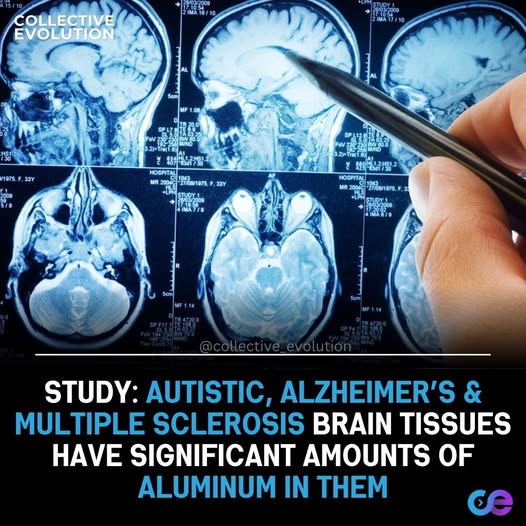
After adding the previous post to my newsletter, blog and social media I thought to create a chapter on Insulin Resistance from the various references to it in my book. After all, if blood sugar spikes and insulin resistance are so destructive to our health, it pays to point up the factors we can implement to reduce our exposure to them. This is the result. If you would like access to a compendium of my over 17 years of gathering health tips, here is the link to my book: https://howtolivethehealthiestlife.com/
(Also read the preceding chapter Glycemic Index for more important data on insulin resistance.)
Frequent blood sugar spikes force the pancreas to release more insulin repeatedly. Over time, this constant demand can cause insulin-producing cells to wear out or stop working properly. This contributes to insulin resistance and reduced insulin production—both key drivers of Type 2 diabetes.
Type 2 diabetes develops gradually, with insulin resistance and inflammation starting decades before symptoms appear.
High blood sugar and insulin levels dramatically speed up the aging process and are primary risk factors for cancer, heart disease, diabetes, Alzheimer’s, reduced immunity and more.
Fasting Insulin Level
According to Dr Mercola, your fasting insulin level should be under 3. The higher it is the more at risk you are for a bunch of diseases, type 2 diabetes being a major one.
Antibiotics
A primary contributor to insulin resistance and diabetes is dysfunctional gut barrier. This can be caused by a single course of antibiotics.
Artificial Sweeteners
Research has repeatedly shown that artificial sweeteners promote insulin resistance and related health problems just like regular sugar does, including cardiovascular disease, stroke and Alzheimer’s disease.
Ashwagandha
Ashwagandha is an adaptogen, meaning it helps your body adapt to challenges by balancing your immune system, metabolism and hormonal systems. The root reduces cortisol levels, restores insulin sensitivity and helps to stabilize your mood.
Body Weight
Mitri noted that excess weight is tied to inflammation, “Someone with a higher BMI may have more difficulty responding to insulin,” she said, noting that this can worsen insulin resistance.
From: https://www.theepochtimes.com/health/french-fries-versus-baked-potatoes-one-raises-diabetes-risk-20-percent-the-other-doesnt-5897553
Butter
And this presentation is very informative and enlightening on the benefits butter has even in what many would consider excessive daily amounts. Weight remained constant, glucose and insulin levels went DOWN on 10 spoons of butter a day!
From: https://www.youtube.com/watch?v=BhNGRB14TTE
Carbohydrates
If you were to elect one single bad guy to target right now, day one, it would have to be simple carbohydrates. Because every starch turns into sugar as soon as it hits your blood stream carbs are just sugar in disguise. They set the stage for insulin resistance.
Chromium
The mineral chromium enhances insulin activity playing a major role in the regulation of insulin release and its effects on carbohydrate, protein and lipid metabolism. Chromium also assists in metabolism of carbohydrates.
Diets
…all of the diets listed require that sugar and ultra processed foods be avoided. That grains are either eliminated or severely curtailed. Which means that the “western habitual diet” was least beneficial at improving a lipids profile, insulin resistance and inflammatory markers.
Want to get healthy? Stop eating ultra processed foods, sugar and excess grains.
From: https://doi.org/10.3390/nu15010076
Interesterified Fats
Due to all the bad press trans fats have received of late, food manufacturers in the US are replacing trans fats with interesterified fats. Similar to the hydrogenating of vegetables oils, this produces hard fats as well as molecules that do not exist in nature. They contain chemical residues and other hazardous waste products full of free radicals that cause cell damage.
“Studies show that interesterified fat raises your blood glucose and depresses insulin production. These conditions are common precursors to diabetes, and can present an even more immediate danger if you already have the disease.
“After only four weeks consuming these fats, study volunteers’ blood glucose levels rose sharply – by 20 percent. This is a much worse result than seen with trans fats.
“Natural vegetable oils that have been processed in any way will create problems for your body at the cellular level. These fats are no longer in their natural state, and your body doesn’t know how to handle them. Your system will try to make use of them and in the process, these fats end up in cell membranes and other locations where they can wreak havoc with your health.“
From http://articles.mercola.com/sites/articles/archive/2009/12/24/Trans-Fats-Can-Be-Deadly.aspx
Food Sequencing
Read the chapter Food Sequencing to learn about the benefits of eating veggies and protein before starches.
French Fries
“French fries are typically deep-fried at very high temperatures, which can produce harmful compounds,” Mousavi said. One such compound is acrylamide, which is formed during browning and linked to inflammation, insulin resistance, and blood vessel damage.
Keto
While short-term ketogenic diets may aid weight loss, new research links prolonged ketosis to liver stress, impaired insulin secretion, and cardiovascular problems.
From: https://nexusnewsfeed.com/article/food-cooking/studies-raise-questions-about-keto-s-impact-on-liver-and-heart-health/
Malnutrition and Hunger
When your body lacks the nutrition it needs, it sends hunger signals to your brain. These signals make you crave sugary, starchy junk foods that rapidly convert to blood sugar which stimulates insulin. Excess blood glucose is stored in the liver and muscles but they can only hold so much of it so the rest is stored as… …that’s right – body fat!
The solution are two-fold:
1. Don’t starve yourself so you fall victim to cravings.
2. Eat high nutrition foods, not empty calories.
Maltodextrin
The Carbohydrate That’s More Dangerous Than Sugar.
Glycemic Index:
Sugar…65
High Fructose Corn Syrup…87
Glucose…100
Maltodextrin…136
A Carbohydrate not classified as sugar, but acts like sugar in a much more deadly way because it spikes insulin….
Maltodextrin is a type of carbohydrate, but it undergoes intense processing. It comes in the form of a white powder from GMO rice, corn, wheat, tapioca or potato starch.
Maltodextrin is a polysaccharide derived from starch hydrolysis and used as a thickener and filler in processed food. On labels, it does not have to be listed as sugar or added sugar, even though it has a higher glycemic index & causes blood sugar to spike and contributes to insulin resistance.
Labeled not only as Maltodextrin, but also Modified Food Starch, Modified Corn Starch and within the “blanket term” Natural Flavors.
Food manufacturers add the powder to a wide range of processed foods such as artificial sweeteners, baked goods, yogurt, beer, nutrition bars, weight loss supplements, cereals, meal replacement shakes, low fat and reduced calorie products, condiments, sauces, spice mixes, salad dressings, chips, pie fillings and snack foods.
Starches
Some great data on how to do one of the most effective things you can do to reduce your insulin spikes.
Cook your rice, potatoes and pasta with a teaspoon of coconut oil, then cool it for 12 hours (24 is better) hours before reheating.
This simple process can increase the resistant starch content of rice by up to 10 times! The coconut oil interacts with the starch molecules, making them more resistant to digestion, while the cooling process further crystallizes the starch.
The body cannot process resistant starch so it becomes a probiotic, feeds the gut bacteria and more butyrate gets produced. This is great for reduced colon cancer risk.
From: https://nexusnewsfeed.com/article/food-cooking/the-shocking-truth-about-white-rice-and-how-to-make-it-healthy-again/ and to view Dr Mandell’s video: https://www.youtube.com/watch?v=cxTIt43exM0








